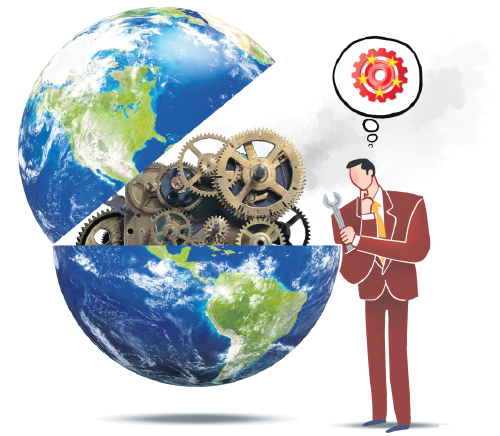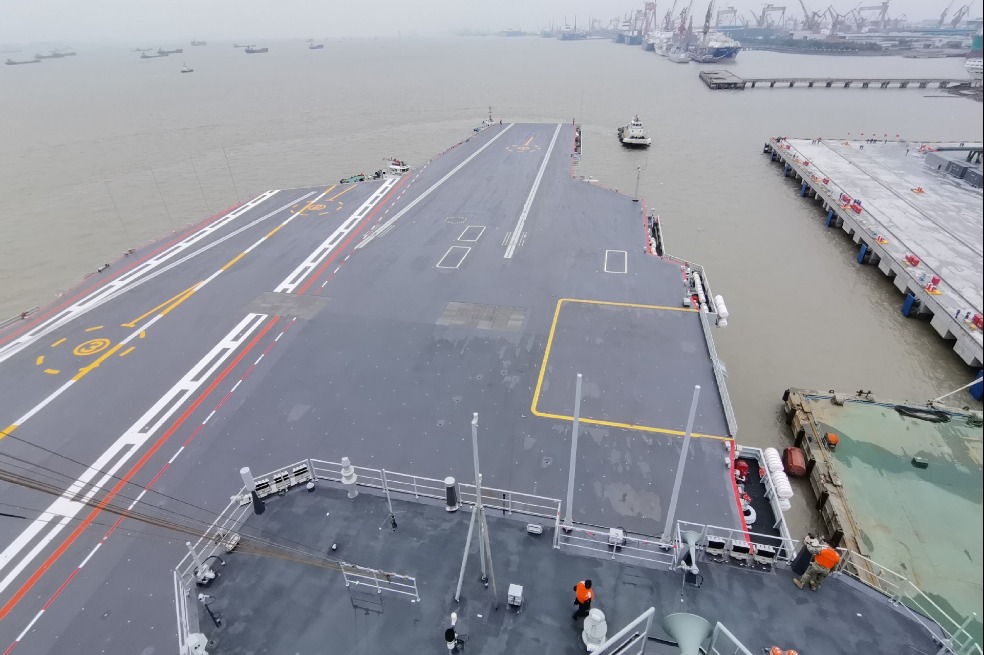Chain reaction: China must mitigate risks of decoupling
By LIU BIN | China Daily Global | Updated: 2020-04-07 08:23

Since its accession to the World Trade Organization, China has been increasingly integrated into the global value chain. But as China has become more embedded into the global value chain, it is increasingly dependent on the global supply chain. That means that whenever a crisis strikes, all it takes is an interruption in one part of the global value chain for the entire supply chain to grind to a halt, thanks to complex and extensive transmission mechanisms magnifying the crisis.
The novel coronavirus has proven more deadly than trade frictions, as the latter are manageable to a certain extent. Epidemic containment, on the other hand, is also a matter of public health and safety. It is hard to gauge the duration of the epidemic and its effects.
Additionally, the diminishing demographic dividends in China are squeezing its comparative advantage. As the senior citizens' population grows and birthrates drop, China is aging faster than ever, and it is expected to become a super-aged society with senior citizens making up more than 14 percent of the total population in the next two years. This is happening at a time when China is already seeing growing labor costs.
Given the high infectivity of the novel coronavirus and the unprecedented scale of containment efforts, labor costs will continue to rise, further weakening China's competitiveness in the export of goods. Competition has been fierce in the textile, electromechanical and chemical industries given the high degree of similarity in exports between China and Southeast Asian countries and the overlaps in export destinations. As the cost of labor in China is rising, the enterprises of developed economies such as the United States, the European Union and Japan are moving their factories to more cost-competitive countries in Southeast Asia including Vietnam and Cambodia, the novel coronavirus is likely to catalyze this shift of labor-intensive industries.
The novel coronavirus will affect the supply chain through both supply and demand. Domestic demand for production and consumption will plunge in the immediate term, which will squeeze imports. On the supply side, most domestic factories have pushed back their reopening dates after the Spring Festival holiday due to the outbreak, which has disrupted the supply of intermediate goods and hindered the production processes in downstream companies overseas. Thanks to the great achievements of epidemic prevention and control in China, China's purchasing managers' index (PMI) was 52.0 percent in March, up 16.3 percentage points from last month. However, it must be noted that the PMI rebound in March was achieved on a very low base in February, and there is still a big gap compared with the previous months. The foreign epidemic situation, especially in the developed countries in Europe and the United States, is out of control unexpectedly, which makes China's economy face the pressure of both sides of supply and demand again.
In terms of trade structure, the hardest hit economies will be the ones that are heavily dependent on China for supply or demand. Countries in the upstream of the global value chain are mainly resource exporters, especially those that rely on oil or mineral exports, such as Saudi Arabia, Russia, Brazil and Australia. Countries in the downstream are mainly developed economies such as the US-one of China's biggest trading partners. The US had been increasing its imports from China up until November 2018. The course was reversed in the following month as US imports from China dipped by 7.68 percent, only to be dwarfed by a decline of over 15 percent in imports during the first two months of 2020.
On the other hand, shares of US imports from Japan, Germany and the Republic of Korea have remained steady, while shares of imports from Canada and Mexico are trending up. As US companies shift their suppliers from China to Canada and Mexico, the pandemic will accelerate the decoupling of the US and China in the global value chain. Among Asian countries, China is the largest export destination for Japan and the ROK, while the ROK and Japan are the largest and second-largest source of imports for China. As all three countries have been hard hit by the virus, they will struggle to maintain their value chain as it is. In 2019, the Association of Southeast Asian Nations replaced the US as China's second-largest trading partner. As ASEAN countries are not among the hardest hit by the epidemic, the China-ASEAN value chain has only suffered mild impacts. On the other hand, China's total trade with the European Union, its largest trading partner, saw a significant decline. Compounded by the gravity of the epidemic in Europe, Sino-European trade can expect to take a big hit in 2020.
In terms of the pandemic's impacts on industries, trade in services has suffered the most, with tourism services, transportation and construction recording the largest downturns. Trade in travel-related services has been the biggest component of China's trade in services for years. But due to the impacts of the epidemic, tourism services and transportation will inevitably experience precipitous declines. Energy, consumer goods and the high-tech industry will also experience shocks over the short run due to shrinking industrial demand in China. In the energy sector, demand for refined oil products has shrunk due to short-term shocks to upstream industries such as the crude and mining industries as a result of the epidemic. Additionally, electromechanical goods and high-tech products may see a notable decline in their export. Substitutions and relocations in the supply chain will bring out fierce competition given the rising complexity of global trade frictions, and the risks of a secondary shock may persist even after the epidemic is over.
Even though the epidemic has been contained in China and things continue to improve, the virus is spreading rapidly in China's major trading partners, Europe and the US, which translates into rising trade risks. The risk of decoupling is real given the supply constraints in China and demand shocks abroad, and is particularly salient in energy, consumer goods, tourism and high-tech sectors. It is therefore particularly important to optimize China's supply chain arrangements.
The author is a research fellow at the Academy of China Open Economy Studies at University of International Business and Economics. The author contributed this article to China Watch, a think tank powered by China Daily. The views do not necessarily reflect those of China Daily.
























